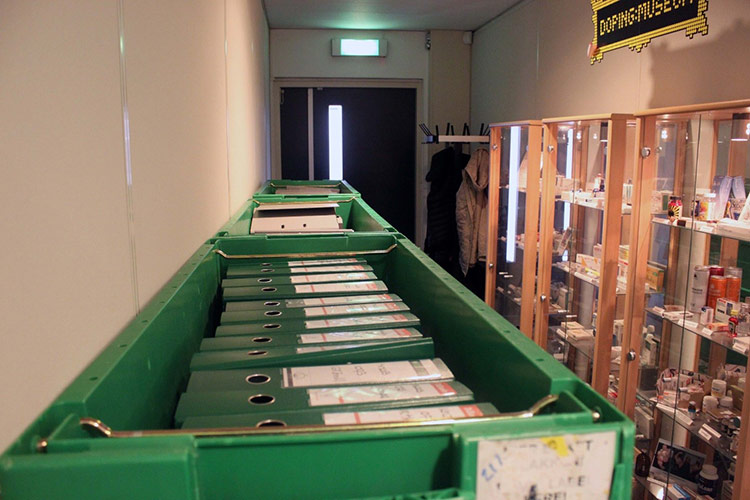Board of Management
The Doping Authority has a board with three members: a chair, a secretary and a treasurer. The secretary is nominated by the NOC*NSF, and the treasurer is nominated by the Ministry of Health, Welfare and Sport. Dolf Segaar, who had reached the end of the maximum period of office of 3 x 3 years, was succeeded as chair in the spring by Harro Knijff. For an overview of the board members at the end of the year under review the reader is referred to Annex 2.
The board delegates the responsibility for day-to-day matters, and for policy preparation and implementation, to the CEO. In other words, the board provides 'overall' direction.
Advisory Board
Under its articles of association, the Doping Authority has an Advisory Board. At year-end 2015, the Advisory Board comprised seven members (meaning that the board is up to strength), who all represent specific interest groups or a specific area of expertise. The Athletes Committee has also decided to appoint a regular deputy who can, when required, take over from the regular Advisory Board member on behalf of the Athletes Committee. The task of the Advisory Board is to advise the board, either on request or at its own initiative. It meets a few times a year. A list of the members of the Advisory Board can be found in Annex 2.
Office staff
During the year under review, the Doping Authority had three departments (Prevention, Enforcement & Investigation and Support), and a legal officer. The three department heads and the legal officer constitute, together with the CEO, the Management Team. One extra person (a documentalist) has been added to the staff temporarily for the implementation of projects financed separately.
At year-end 2015, the office organisation comprised 18 people and 14.2 FTEs. For an overview, the reader is referred to Annex 3.
Doping Control Officials (DCOs)
In addition to the permanent staff, there were 16 part-time Doping Control Officials at the end of 2015 (nine men and seven women, see Annex 4), who were appointed under 'minimum hours' contracts.
Housing
In the spring of 2015, the Doping Authority moved to a new office location in Capelle aan de IJssel. The new offices are a better shop window for the organisation and the layout of the premises is more in keeping with the work of the Doping Authority than the offices where the Doping Authority has been located for the last ten years. The offices are now grouped around a central area, furthering the interaction between the different individuals and departments. Furthermore, there is also room for possible expansion in the future.

Quality
Anti-doping policy places considerable importance on delivering quality. Many doping organisations therefore work with quality systems. This is particularly relevant for the implementation of doping controls: the National Doping Regulations require ISO certification as a precondition for conducting controls. However, other tasks such as the granting of therapeutic use exemptions and prevention activities should, in our view, also meet ISO standards. The Doping Authority and its predecessors in law received ISO certification back in 1998. In September 2013, our organisation acquired a new ISO 9001:2008 Certificate, which is valid for three years. In 2015, DEKRA conducted an audit which identified no anomalies whatsoever.
A Complaints Procedure was adopted and published on the website in May 2011. One complaint was dealt with under this procedure in 2015 (this was, incidentally, the first complaints procedure ever to be conducted).
TUE Committee and TUE Appeals Committee
One of the provisions in the doping regulations relates to the procedure for the use of prohibited medication. The Doping Authority has established, for the Dutch sports associations, a committee known as the Therapeutic Use Exemption Committee (TUE committee), which consists of independent doctors.
A TUE Appeals Committee was established in 2015. An interested party who objects to a decision by the TUE committee can appeal to the TUE Appeals Committee. The TUE Appeals Committee consists of three doctors.
See Annex 2 for the members of the two committees.